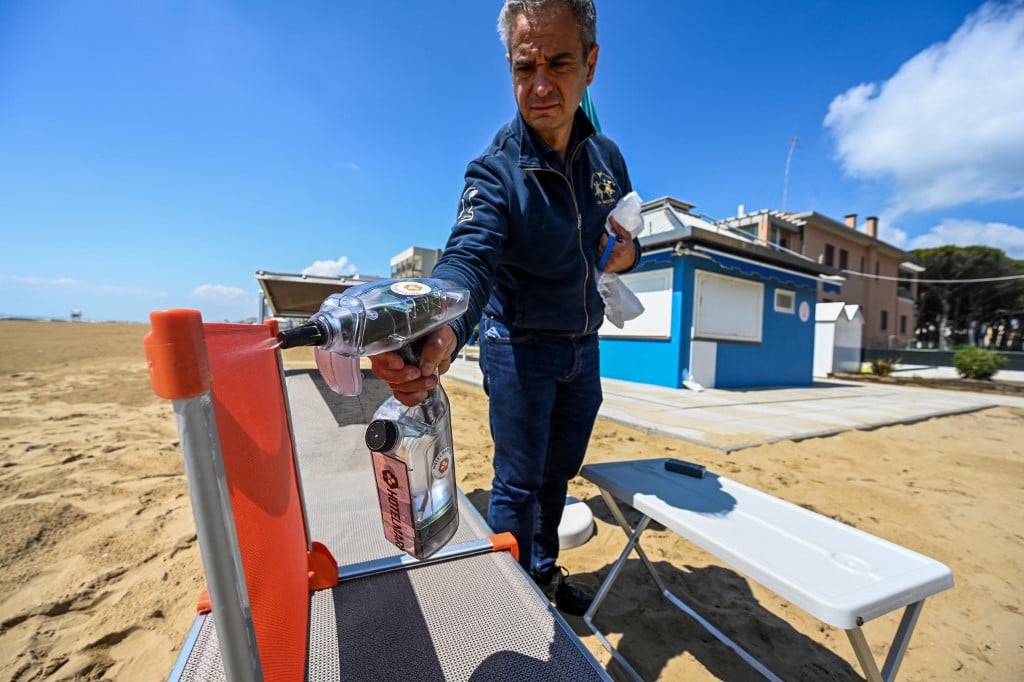**Note: This article is no longer being updated. Please find the latest updates on the current travel rules in Italy here.**
Italy had already loosened some of the rules at the beginning of the month, and from May 18th it relaxed them further. They're due to change again on June 3rd.
Can I travel in and out of Italy?
The rules on international travel remain the same for now: you cannot leave or enter Italy unless absolutely necessary.
That means you can cross the border to return home, if you've been stranded abroad, or for urgent reasons of work or health, or in an emergency. Tourism or visiting a second home that is not your permanent address is not considered a valid reason.
READ ALSO: The rules you need to follow to enter Italy right now
Anyone arriving in Italy from overseas is currently subject to a mandatory 14-day quarantine during which they must remain indoors.
The rules on international travel are set to change on June 3rd, with trips to and from the EU, Schengen Area and UK allowed without a quarantine. Find out more about what will change here.
Can I travel between regions of Italy?
Like international travel, crossing internal borders in Italy is effectively banned.
The government did not lift any of the restrictions on interregional travel in its latest rule change, which means that you're only allowed to travel between regions for work, health reasons or other emergencies, or to return home. And you can be stopped by police, who'll ask you to fill in an autocertificazione ('self-certification') form to justify your trip.
READ ALSO: The form you still need to travel between regions in Italy
For example, if you have a medical appointment or need to be somewhere for work or business, you're allowed to travel. However you'll need proof, and police may check your story.
What exactly counts as an emergency or necessity is more open to interpretation by local authorities. If in doubt, contact your local comune or carabinieri police station.
These rules are set to change on June 3rd, when all restrictions on domestic travel will be lifted (unless local authorities say otherwise).
Can I make a trip within my region?
Yes. As of May 18th you're free to travel within your own region for any reason, including to visit friends or for exercise, leisure or a holiday.
READ ALSO: Everything that changes in Italy from May 18th
You'll no longer need to carry an autocertificazione form if you're travelling locally, and you can drive or take public transport.
Can I go to the beach?
So long as you stay within your own region, yes.
But be aware that local authorities may restrict access to beaches and other areas at risk of crowding. In Rome, for instance, the city council says you can go to the beach to exercise but not to sunbathe or picnic.
Check your local comune's website before setting off.
READ ALSO: How Italy's beaches are preparing for a very different summer

Photo: Vincenzo Pinto/AFP
Can I go to my second home?
If it's in the same region as your permanent address, sure.
Visiting a holiday home is not a valid reason to travel to another region or enter Italy from abroad, however.
If you let out your second home as a business, you could make the case that you need to travel to it for work reasons, especially now that limited tourism is restarting. But you must be able to prove that your trip is urgent and essential, not for something that could wait or be handled by someone else.
Are the rules the same across Italy?
The government's latest decree states that movement can be limited by regional authorities “in relation to specific states and territories, in accordance with the principles of adequacy and proportionality to the epidemiological risk”.
In other words, areas with high numbers of coronavirus infections or that are considered particularly vulnerable may choose to set stricter local limits on travel.
Check the website of your regione or comune to find out which rules apply where you are.
Do I need to wear a mask when travelling?
Yes, if you're taking public transport or a taxi, or riding in a car with someone you don't live with.
READ ALSO:
- What are Italy's latest lockdown rules on sharing a car or scooter?
- How to stay safe on public transport under Italy's lockdown phase two
The national government says masks should be worn in any enclosed or crowded public spaces, while some regions require people to cover their faces anywhere in public, including on the street. Find more details about when and where you need to wear a mask here.


 Please whitelist us to continue reading.
Please whitelist us to continue reading.
Member comments